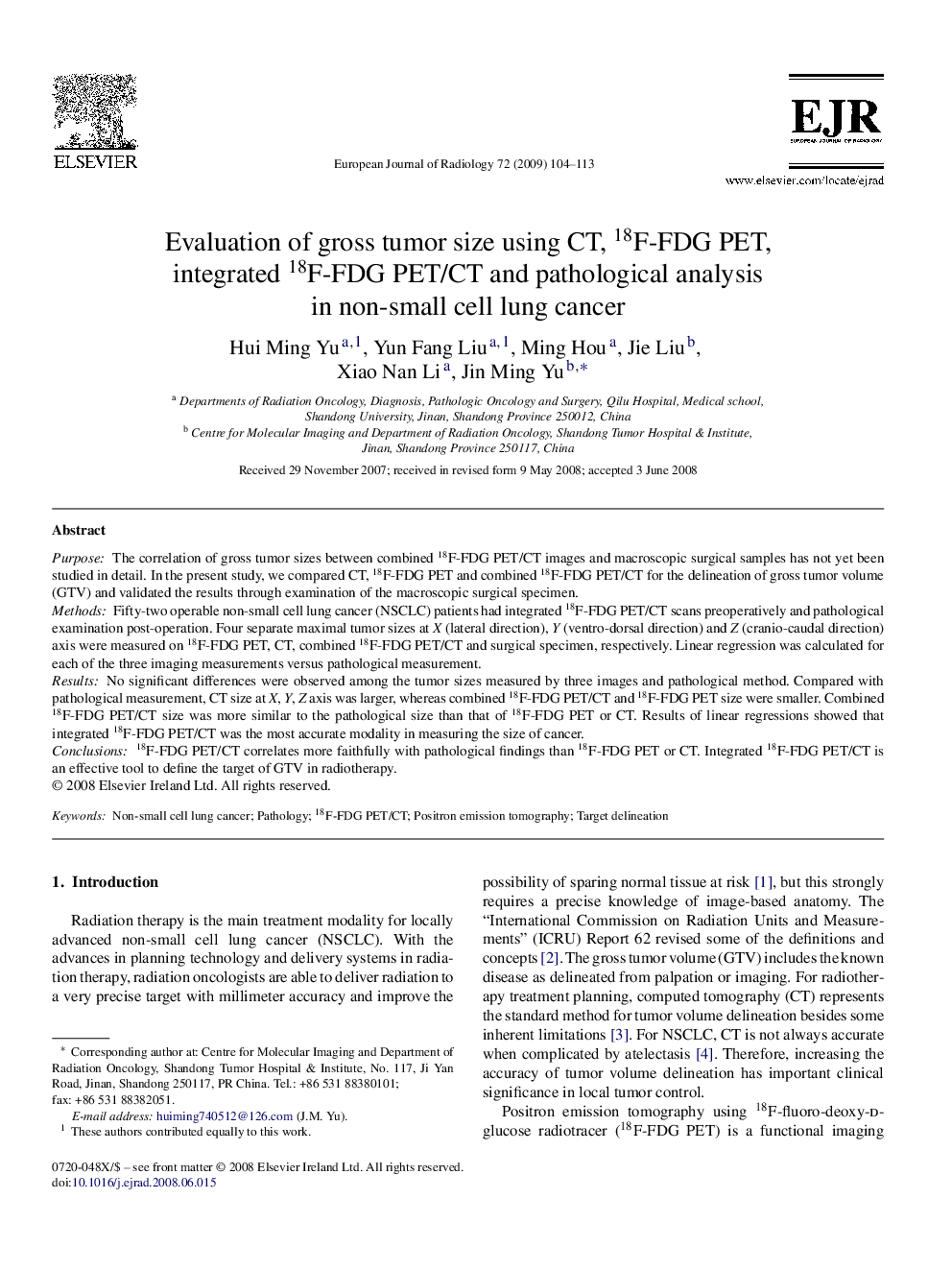| Article ID | Journal | Published Year | Pages | File Type |
|---|---|---|---|---|
| 4227044 | European Journal of Radiology | 2009 | 10 Pages |
PurposeThe correlation of gross tumor sizes between combined 18F-FDG PET/CT images and macroscopic surgical samples has not yet been studied in detail. In the present study, we compared CT, 18F-FDG PET and combined 18F-FDG PET/CT for the delineation of gross tumor volume (GTV) and validated the results through examination of the macroscopic surgical specimen.MethodsFifty-two operable non-small cell lung cancer (NSCLC) patients had integrated 18F-FDG PET/CT scans preoperatively and pathological examination post-operation. Four separate maximal tumor sizes at X (lateral direction), Y (ventro-dorsal direction) and Z (cranio-caudal direction) axis were measured on 18F-FDG PET, CT, combined 18F-FDG PET/CT and surgical specimen, respectively. Linear regression was calculated for each of the three imaging measurements versus pathological measurement.ResultsNo significant differences were observed among the tumor sizes measured by three images and pathological method. Compared with pathological measurement, CT size at X, Y, Z axis was larger, whereas combined 18F-FDG PET/CT and 18F-FDG PET size were smaller. Combined 18F-FDG PET/CT size was more similar to the pathological size than that of 18F-FDG PET or CT. Results of linear regressions showed that integrated 18F-FDG PET/CT was the most accurate modality in measuring the size of cancer.Conclusions18F-FDG PET/CT correlates more faithfully with pathological findings than 18F-FDG PET or CT. Integrated 18F-FDG PET/CT is an effective tool to define the target of GTV in radiotherapy.
